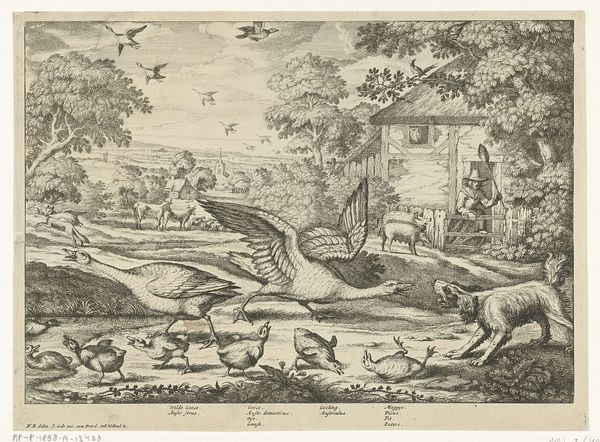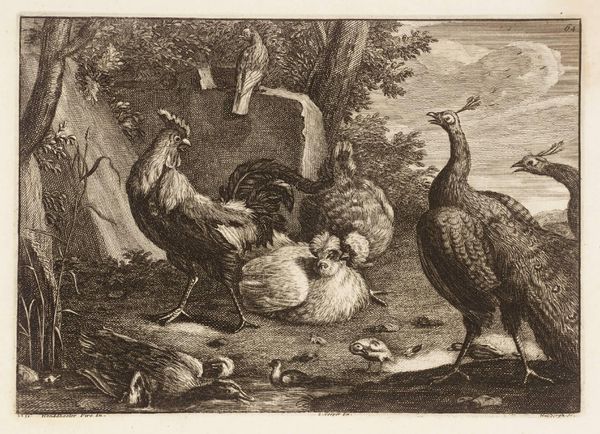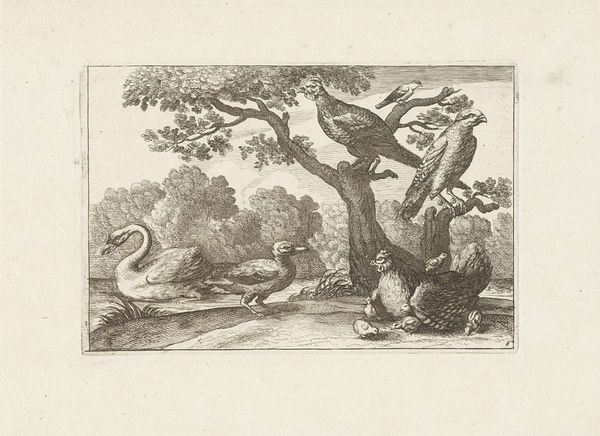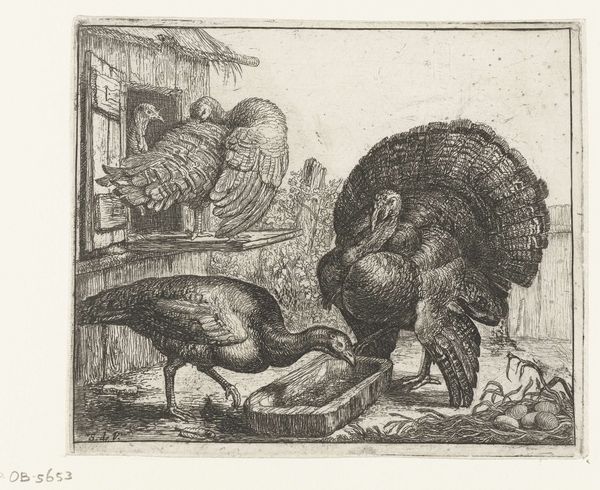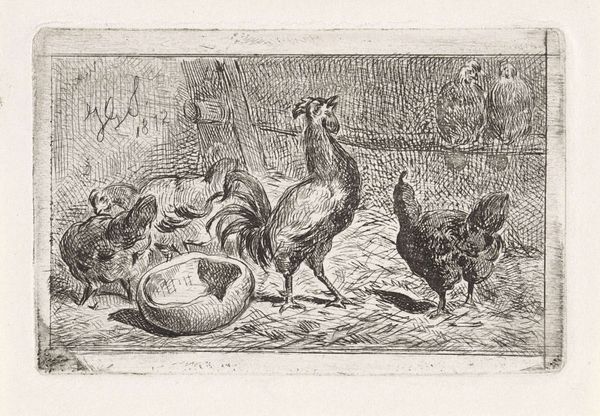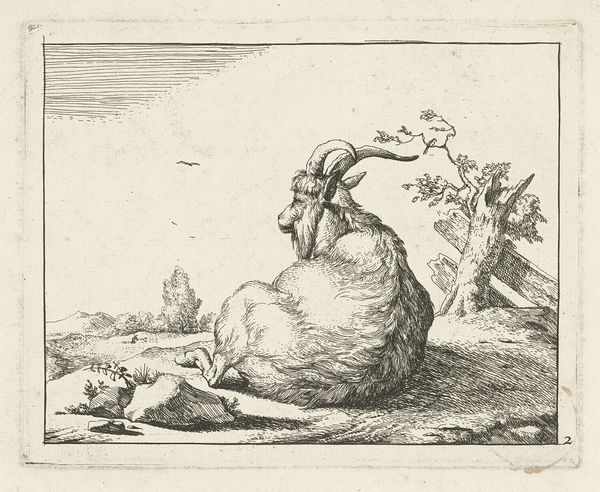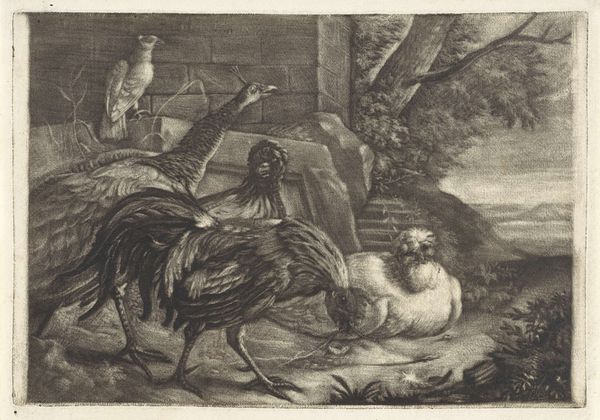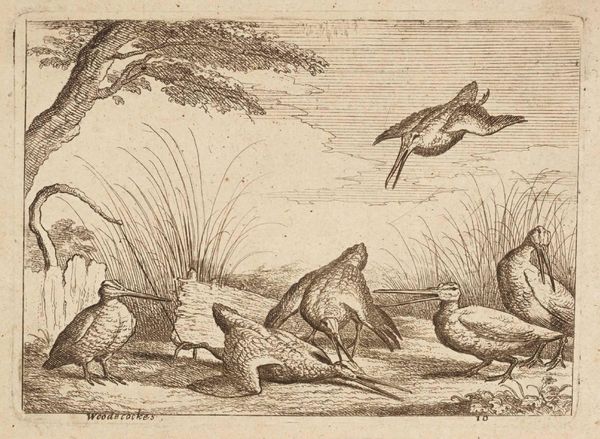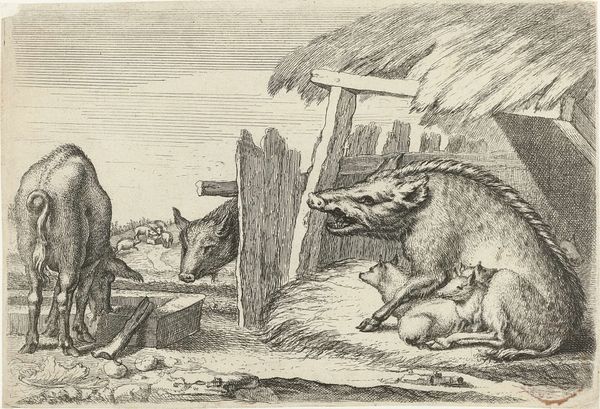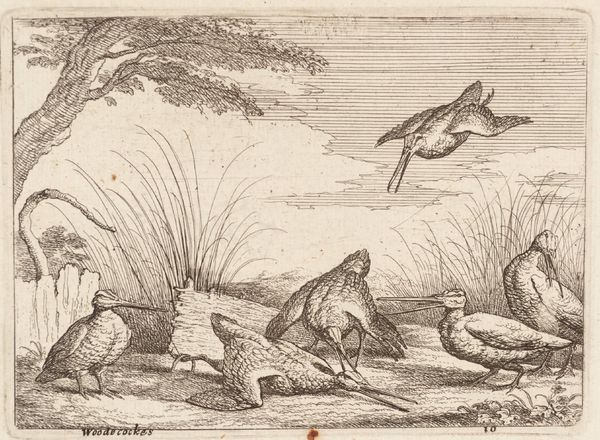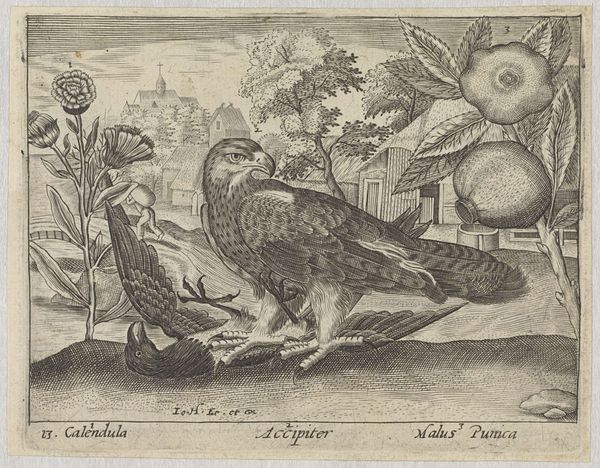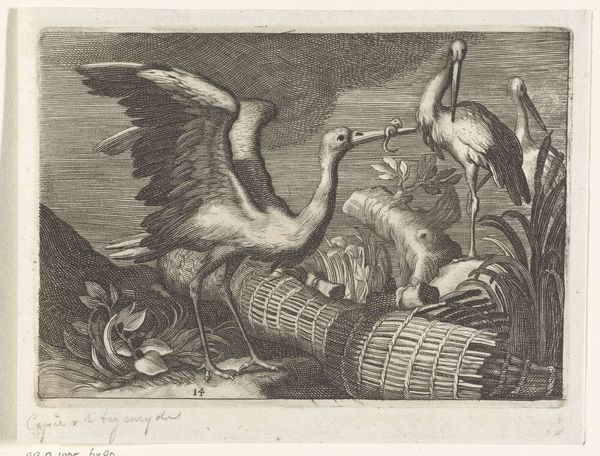
print, etching
#
dutch-golden-age
# print
#
etching
#
landscape
#
figuration
#
genre-painting
#
realism
Dimensions: height 98 mm, width 155 mm
Copyright: Rijks Museum: Open Domain
Curator: Today, we're observing "Peacocks in a Farmyard," an etching by Frederick Bloemaert, created sometime after 1635. It’s part of the Rijksmuseum collection. Editor: Right away, I’m struck by how humble this feels. You know, peacocks—ostentatious by nature—are put in this very common, earthly environment. It feels almost ironic, definitely not majestic in the slightest! Curator: I find it intriguing that Bloemaert chose etching, a readily reproducible technique, to depict this rural scene. Think about how this medium allows the image to be disseminated, reproduced, and even consumed like other commonplace commodities of the period. The etching makes luxury accessible. Editor: Exactly! And those bold, cross-hatched lines give it a very graphic feel. It isn’t soft or dreamlike. It's got a raw immediacy—much like farm life. I find that juxtaposition of material to content so very fitting. Does it feel satirical? Or just honest? Curator: Considering Dutch Golden Age sensibilities, there's a chance it is partly commentary on prosperity and perhaps excess, a visual mediation on values, you see. There’s this push and pull between simple existence and grand displays of wealth or aspiration. Editor: True, but it’s done so gently, without real judgment. The farm woman is also there, diligently feeding the peacocks, they might be just an odd element on her regular landscape. She adds to the everyday reality. Her labor sustains this, dare I say it, “noble” bird! Curator: Yes! She's not an insignificant component, which touches on gender and class dynamics within Dutch society then. She and the other animals, though depicted on a smaller scale, become part of the complex system of value, exchange and everyday life that supported it all. Editor: I keep going back to those lines; they're simple but so effective. He renders each texture, the feathers, the woman's hair and even the rough wooden panels of the barn. Bloemaert almost challenges you to consider everything in detail. Curator: Which aligns perfectly with the era's increasing interest in naturalism, an attempt to capture and comprehend the material world through empirical observation, then artistic replication through pieces like this. Editor: Absolutely, making this artwork not just a visual pleasure but also, I think, a starting point to reflecting on labor, opulence, and life as lived back then. Curator: I would agree. This gives me a greater appreciation of this depiction, its craftsmanship, as well as the historical circumstances within it emerged and keeps inspiring.
Comments
No comments
Be the first to comment and join the conversation on the ultimate creative platform.
